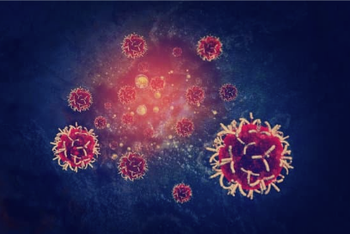
Presurgical FOLFOX Shows Noninferior DFS Vs Chemoradiation in Rectal Cancer
Results from a randomized trial suggest that neoadjuvant FOLFOX may be an effective treatment for patients with locally advanced rectal cancer who are suitable to undergo sphincter-sparing surgery.
Neoadjuvant treatment with fluorouracil plus leucovorin and oxaliplatin (FOLFOX) produced noninferior disease-free survival (DFS) outcomes vs preoperative chemoradiotherapy in patients with locally advanced rectal cancer who are candidates for receiving sphincter-sparing surgery, according to findings from a randomized trial (NCT01515787) published in New England Journal of Medicine.
Concerning DFS, FOLFOX plus selective use of chemoradiotherapy was noninferior to chemoradiation with respect to disease recurrence or death (HR, 0.92; 90.2% CI, 0.74-1.14; P = .005). The 5-year DFS rates in the FOLFOX and chemoradiotherapy arms, respectively, were 80.8% (95% CI, 77.9%-83.7%) and 78.6% (95% CI, 75.4%-81.8%).
Investigators reported a 5-year overall survival (OS) rate of 89.5% in patients receiving FOLFOX and 90.2% in those receiving chemoradiation (HR, 1.04; 95% CI, 0.74-1.44). Additionally, the 5-year incidence of local recurrence in each respective arm was 1.8% and 1.6% (HR, 1.18; 95% CI, 0.44-3.16).
Overall, 90.4% of those receiving FOLFOX and 91.2% of those receiving chemoradiation in the per-protocol population had pathological complete resections. The corresponding values in each respective arm for patients who underwent surgery were 98.9% and 97.1%.
“The increasing number of treatment options for locally advanced rectal cancer enables customized treatment that is based on tumor-specific features,” the study authors wrote. “The findings in this trial have extended the therapeutic options by showing the noninferiority of neoadjuvant FOLFOX with selective use of chemoradiotherapy to the prevailing standard of neoadjuvant chemoradiotherapy.”
Investigators evaluated patients as part of a multi-center, unblinded, randomized trial with a phase 2/3 design across 264 academic and community-based institutions in Canada, Switzerland, and the United States. Patients randomly assigned to the FOLFOX group (n = 585) received 6 cycles of modified FOLFOX6 intravenously every 2 weeks; those unable to complete at least 5 cycles were eligible to receive chemoradiation. Patients in the chemoradiation group (n = 543) received 50.4 Gy in 28 fractions in combination with 225 mg/m2 per body surface area per day of fluorouracil or 825 mg of oral capecitabine twice a day.
The primary end point was the noninferiority of FOLFOX compared with chemoradiation with respect to DFS. The study’s secondary end points included OS, local recurrence, pathological complete resection, and toxicity.
Patients 18 years and older with previously untreated, pathologically confirmed, locally advanced rectal cancer staged as T2 node-positive, T3 node-negative, or T3 node-positive were eligible for enrollment on the trial. Additional eligibility criteria included having an ECOG performance status of 0 to 2.
In the FOLFOX and chemoradiotherapy groups, respectively, most patients were male (63.1% and 68.1%), White (84.1% and 86.0%), and non-Hispanic (88.2% and 87.5%). Additionally, most patients in each respective group were from the United States (89.6% and 90.1%) and had an ECOG performance status of 0 or 1 (99.5% and 99.4%). Most in each group had a rectal tumor location that was more than 5 but no higher than 10 cm from the anal verge (64.1% and 63.4%) and T3 node-positive disease (49.5% and 56.5%).
Overall, 74.9% of those in the FOLFOX group received adjuvant chemotherapy, 79.5% of whom underwent treatment with adjuvant FOLFOX for a median of 6 cycles. Additionally, 77.9% of patients in the chemoradiotherapy group received adjuvant chemotherapy, 66.4% of whom were treated with FOLFOX for a median of 8 cycles.
Grade 3 or higher adverse effects (AEs) affected 41.0% of those in the FOLFOX group and 22.8% of those in the chemoradiotherapy group, although investigators noted that treatment in the former group lasted approximately twice as long. Common grade 3 or higher AEs in patients receiving neoadjuvant FOLFOX included neutropenia (20.3%), pain (3.1%), and hypertension (2.9%). The most common toxicities of these grades reported in the chemoradiotherapy group were lymphopenia (8.3%), diarrhea (6.4%), and hypertension (1.7%).
Reference
Schrag D, Shi Q, Weiser MR, et al. Preoperative treatment of locally advanced rectal cancer. N Engl J Med. 2023;389:322-334. doi:10.1056/NEJMoa2303269
Newsletter
Stay up to date on recent advances in the multidisciplinary approach to cancer.




